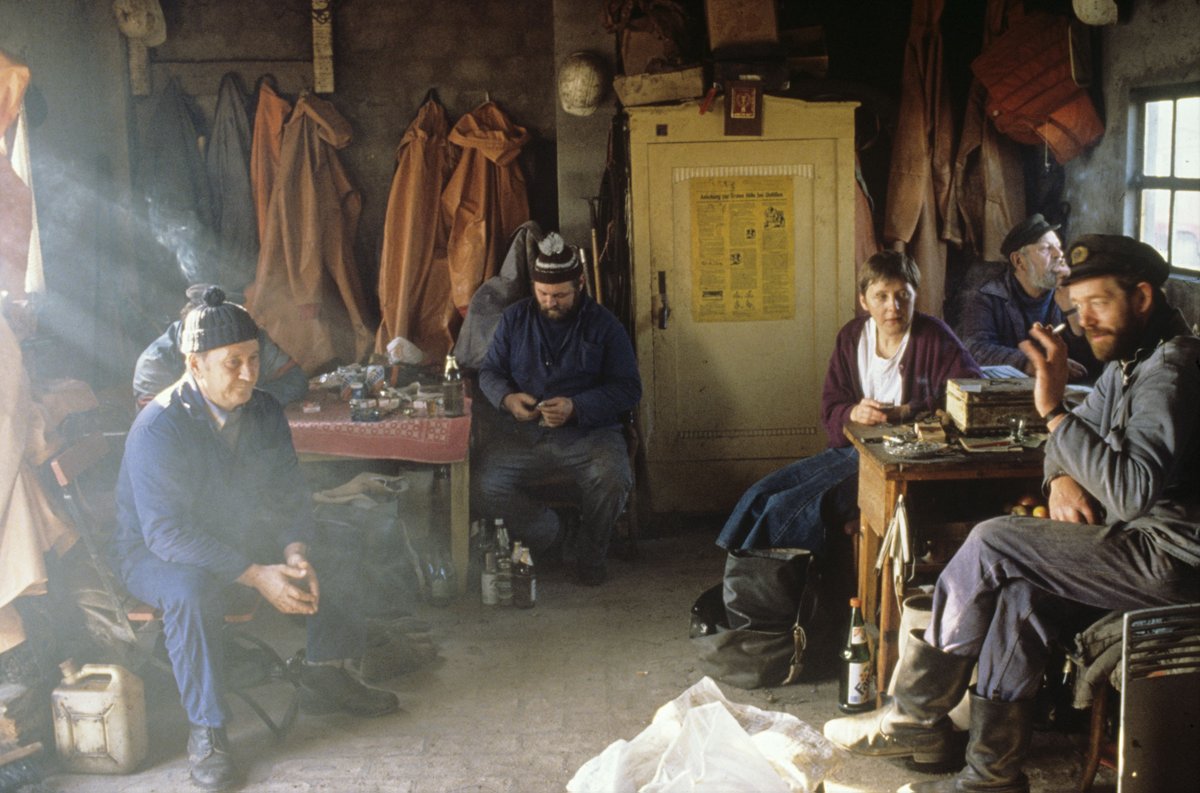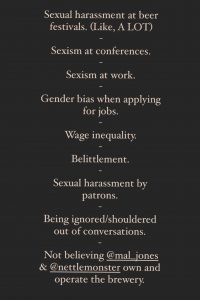 Charts. I used to draw loads of charts. The one above from December 2016 [Ed.: fig 1.] was really useful as it succinctly describes the world of good beer from a wee titch in time before 1980 to the then present day without all the revisionist history imposed on us all by the BA. I was very interested five to six years ago in how beer culture described itself – which in part led to me shifting away my focus from researching brewing history to reading the weekly news. And as we can see in the diagram, craft as it then existed died in around 2015* but the term has stuck around, generating suckers and shoots that are worth exploring and, seeking external structures, may be explored using a few agricultural terms as analogies: sports, scions and volunteers.
Charts. I used to draw loads of charts. The one above from December 2016 [Ed.: fig 1.] was really useful as it succinctly describes the world of good beer from a wee titch in time before 1980 to the then present day without all the revisionist history imposed on us all by the BA. I was very interested five to six years ago in how beer culture described itself – which in part led to me shifting away my focus from researching brewing history to reading the weekly news. And as we can see in the diagram, craft as it then existed died in around 2015* but the term has stuck around, generating suckers and shoots that are worth exploring and, seeking external structures, may be explored using a few agricultural terms as analogies: sports, scions and volunteers.
What’s that? Let’s define some terms. A sport in the plant world is a genetic mutation that results from a faulty chromosomal replication. A scion is the one bit of a grafting that is intended to bear fruit characteristics that is stuck on the bit that goes into the ground which provides other characteristics, often related to hardiness. A volunteer is something left behind and forgotten in the ground that pops up the next spring, bringing both hazards and opportunities.
Like Wittgenstein pointed out, axioms or self-evident statements are a useful way of understanding something. This is as true in beer as metaphysics. We have established or at least argued (in no particular order) that beer creates aggregation, is a means to an end, is cyclical, is responsive, is pervasive, and beer resists. Does the exploration of where craft has gone through the lens of sports, scions and volunteers add to that list of axioms? Let’s see, shall we? Whatever the outcome its can’t have more holes as nationalism or style as a construct. Let’s hope it is at least as helpful as Ron’s new Dark/Pale and Sweet/Bitter continuum.
 One last thing before we start. Another chart. Or, rather, an updated chart. To the right, is an update [Ed.: fig 2] of a chart that I created in 2016 or so trying to get a handle on beer culture at the time upon which I have layered notations. Back when craft was a unified battle against all external forces as opposed to today’s schism riddled word cloud that would make a 1600s Scottish Presbyterian proud. Remember. Craft died in 2015. In 2016-17 were were describing its entrails. Now we are describing something else. Its offspring? Its ghost?
One last thing before we start. Another chart. Or, rather, an updated chart. To the right, is an update [Ed.: fig 2] of a chart that I created in 2016 or so trying to get a handle on beer culture at the time upon which I have layered notations. Back when craft was a unified battle against all external forces as opposed to today’s schism riddled word cloud that would make a 1600s Scottish Presbyterian proud. Remember. Craft died in 2015. In 2016-17 were were describing its entrails. Now we are describing something else. Its offspring? Its ghost?
So, to repeat, a sport in the plant world is a genetic mutation that results from a faulty chromosomal replication. I think it is safe to say that we have seen some sporting in the world of good beer. A sport is something unintended by the original breeder of the plant. While some will fundamentally misunderstand and call something like the hop Fuggles a landrace, it is actually a sport as its ancestors were hop plants already farmed and developed under the careful eye of husbandry. As Martyn wrote in 2016, Fuggles were first found in a garden. And hops were big business well before Fuggles came along. No, what is really the sport in IPA isn’t the hop but the muck… the haze… the lactose. The over-allocations of the term IPA over the last few years to encompass these new forms is as faulty a replication if ever there was one. No one intended IPA when first used to later become as diluted in terms of meaning as it has become. Note: this is a neutral observation at this point – no comment on any sort of fluid in a can marked with these three letters. But it is an example of a sport.
Next, we recall that a scion is the one half of a grafting that is intended to bear certain fruiting characteristics that is stuck on the bit that goes into the ground which provides other characteristics, often related to hardiness. This sort of intentional mixing of characteristics results in something a lot like a sport but it is guided by human intervention. It won’t necessarily make the fruit taste different but, though grafting on tougher root stock, can extend a growing range or defeat a certain pest.
As we can from the chart above, fig. 2, two things we could call craft in 2016 have occurred: (i) it has encroached into micro in terms of a reduced availability of traditional styles of beer even while (ii) it has itself undergone what may be a schism. In addition to craft and poor widdle cwaft we have something else which I may tentatively call new craft. Old craft is serious stuff. Newer craft isn’t the same – it’s a pear branch growing above a root that had every intention of creating apples.
Interesting, this newer craft is made with an intentional rejection of style and tradition while retaining at least a political claim to being somehow craft. It is not just the hazy IPAs but also the fruit gose and hazelnut imperial bourbon barrel aged stout with kviek.** It may not be your thing or my thing but folk seem to be enjoying themselves. Whatever it is, by rights if it had any self respect it would ditch the label of craft and pick another name to express itself. New craft is mainly characterized by the sense of fun it conveys. Invention, unrestrained exploration and fun. That is itself an intentional scion branching off of craft. And it needs a new word. Again, this is a neutral observation at this point.
Finally, we have the volunteer. The thing left behind and forgotten. Early volunteer potatoes in the spring can be far sweeter and tastier than anything else but the plants also are a playground for blights and viruses that can wipe out the entire following summer’s crop in a whole regions. So, what has been hidden or forgotten in craft? Plenty. One reason for this is natural given in the constant in flow and out flow of writers,*** who move on to other interests like trade PR or comms – or simply more complex journalistic topics.**** Plenty falls through the cracks as a result.
Some things that were hidden or forgotten that have become obvious over the last couple of years. Leading to a well-founded righteous indignation and meaningful accusations. Look, if we take the GBH list of Signifiers 2021 published this week at all seriously, we have to recognize that most are deeply and quite rightly unhappy about bigoted aspects of beer culture. Which draws me back to the chart above, fig. 2. We now know very well that craft can also shelter anti-social and even abusive tendencies. Who were these bigots in beer culture before the newer voices called them out? Were they actually volunteers, all hidden? Or were they sitting there safely in plain view in a zone overlapping poor widdle craft and micro?
Well, they have actually been around as Josh Noel reported for as many decades as the good beer movement has been around. And as he wrote in relation to the time when craft was reinvented out of micro around 2002 to deal with the proudly pervy aspect that had reared its head, it was a time not unlike now:
By the early 2000s, craft beer was splintering into identities. It was cool, it was hip, it was counter culture, it was “you’re not worthy”…
Are we there again? Facing a splintering? I actually think we are. Just one built on new values and new issues. Something that is both fun and ethical. As we see in fig 1, there is always overlap and transition. Will we see new confident approaches, even organizations arise? Why not? Why should the new just defeat the baggage of craft at a moral level when you can beat it on the beer store shelves? After all isn’t that what macro was supposed to do in the first place, address all the wrongs big brewers inflicted upon society?
It may now be that craft is to this new fun, inclusive, ethical sort of beer as micro was to craft. Craft and its dominant culture is now your older sibling’s or uncle’s beer, now tied to themes and traditions that don’t interest people outside of the bubble or fest and events that now turn people off. The new beer and the scene that is building around it doesn’t seem to need craft and, in that respect, is much more like the 1980s inventive weld-your-own-brewery-equipment micro scene that the business oriented ambitions of craft rejected. Today? It’s more about the positive personal experience, not just about being a follower. The new fun beer is easy and tasty. The scene is positive. That’s axiomatic. It just needs its own name. Then I can put it on a graph.
*Change? Remember #IndieBeer or craft v. crafty? No? No one does.
**is at least two adjectives before the substantive style noun is a hallmark of the new?
***…and newbie drinker.
****It reminds me of something I read about a turning point in the early church: what had been society of saints became a school for sinners. Who now relies on the authoritative teaching of craft in light of what we now know? To be honest, while Boak and Bailey may find value in the few remaining digital beer mags that “pay talented people to tackle big subjects at length and for that we thank them” that’s no guarantee pay creates consistently high quality content. It also causes another form of forgetting: the topic that goes unexplored. So we have constrained formulaic approaches defined by editors who have creditors. We have the standard B.O.B. We have the newbie style guides. And… what? More ra-ra revisionism? What else?














